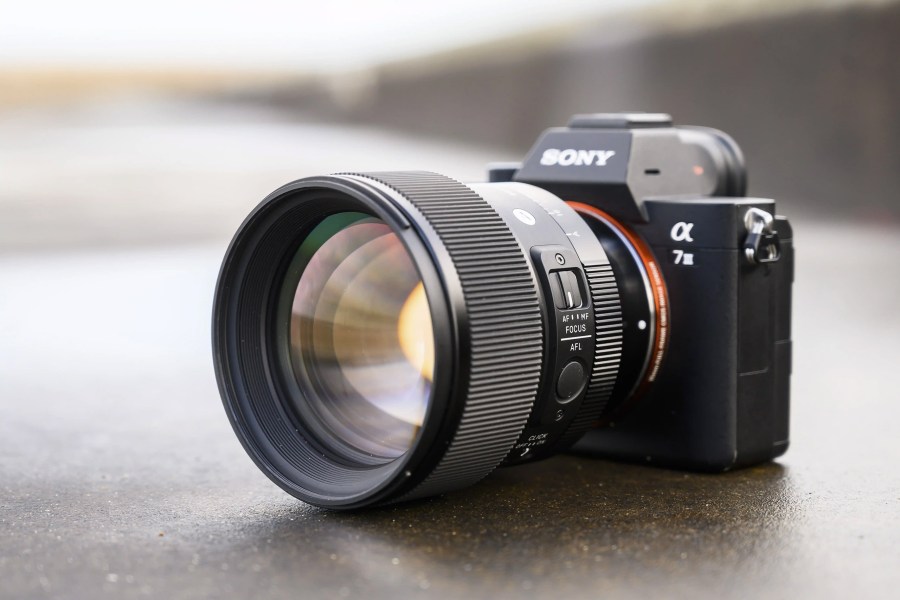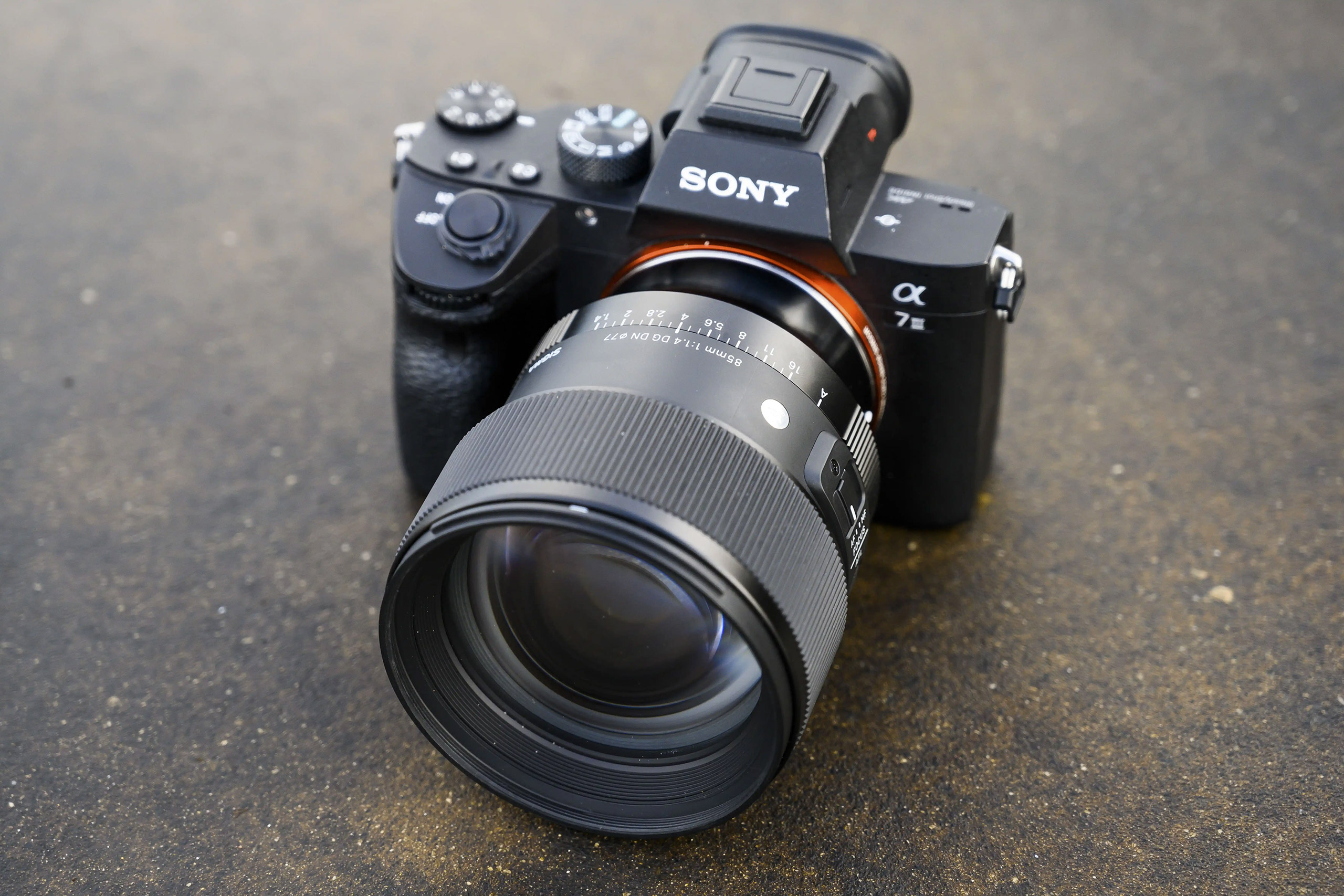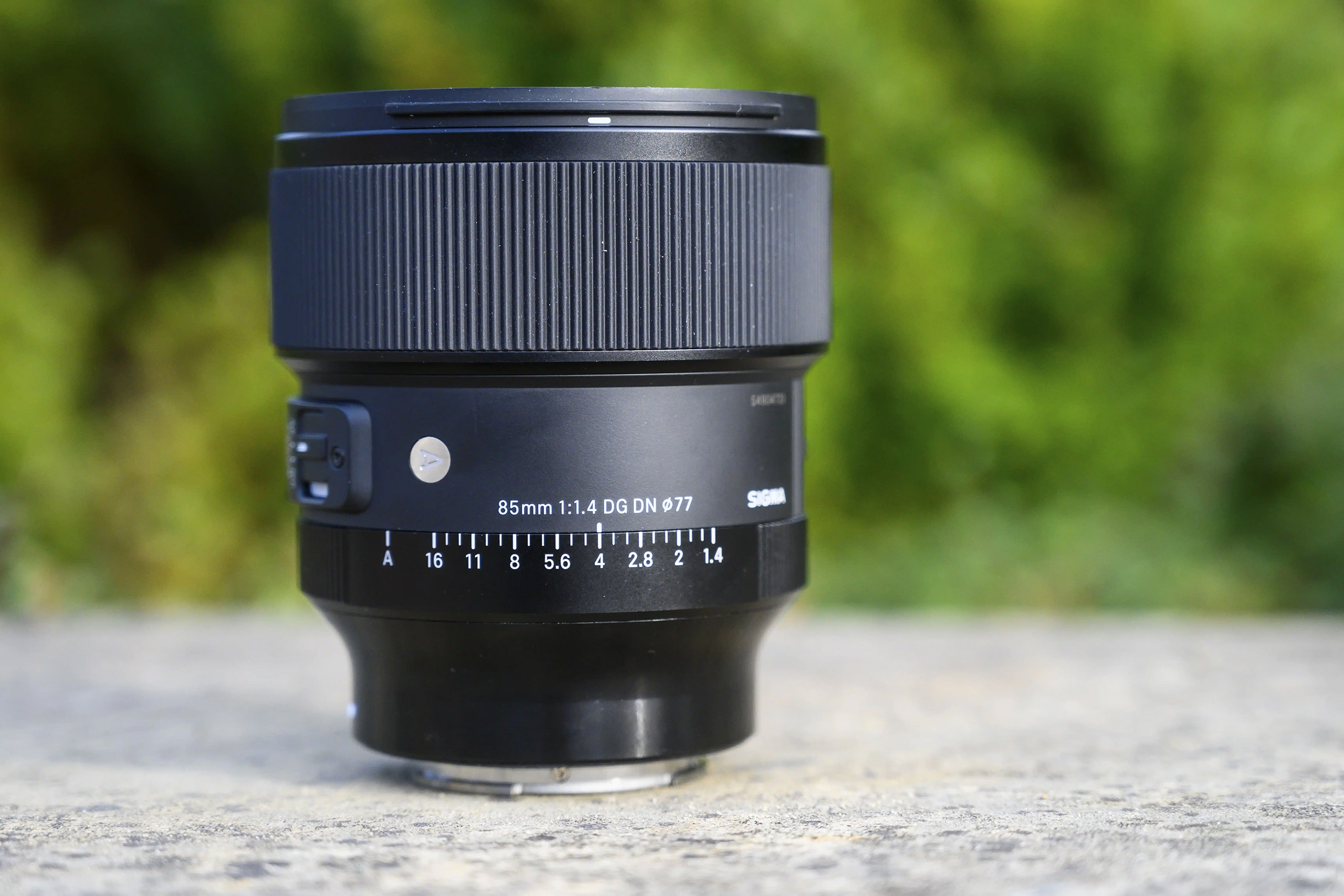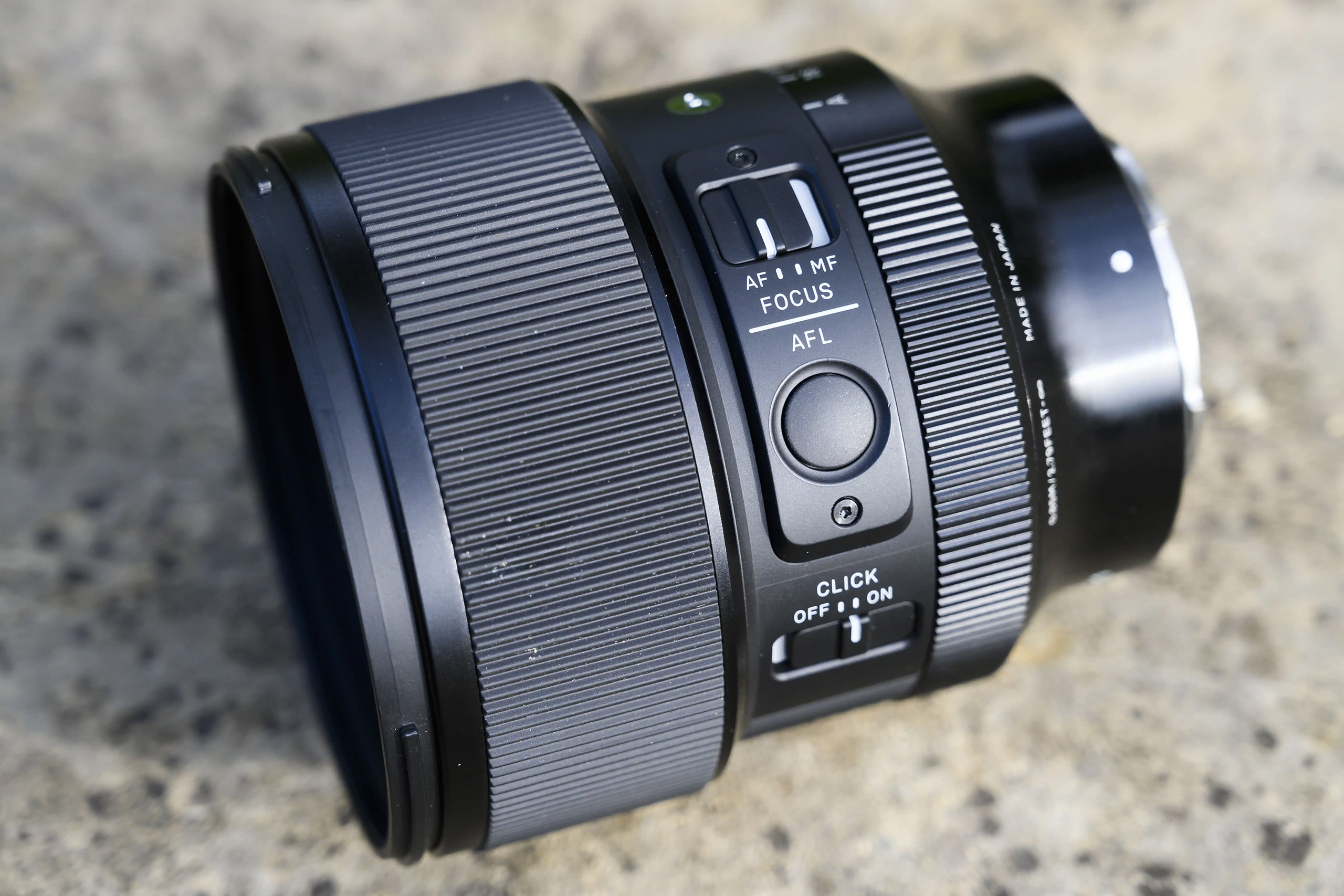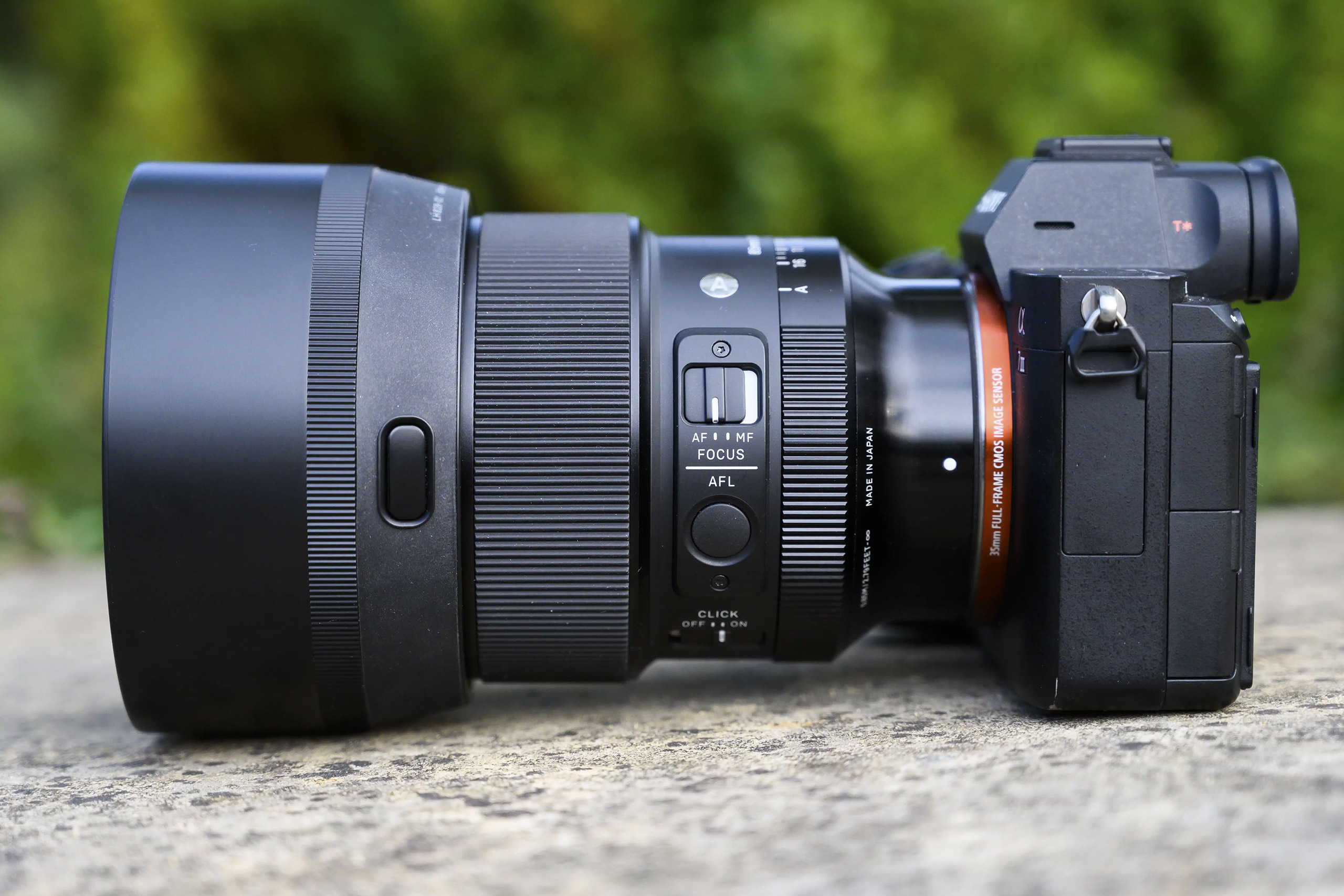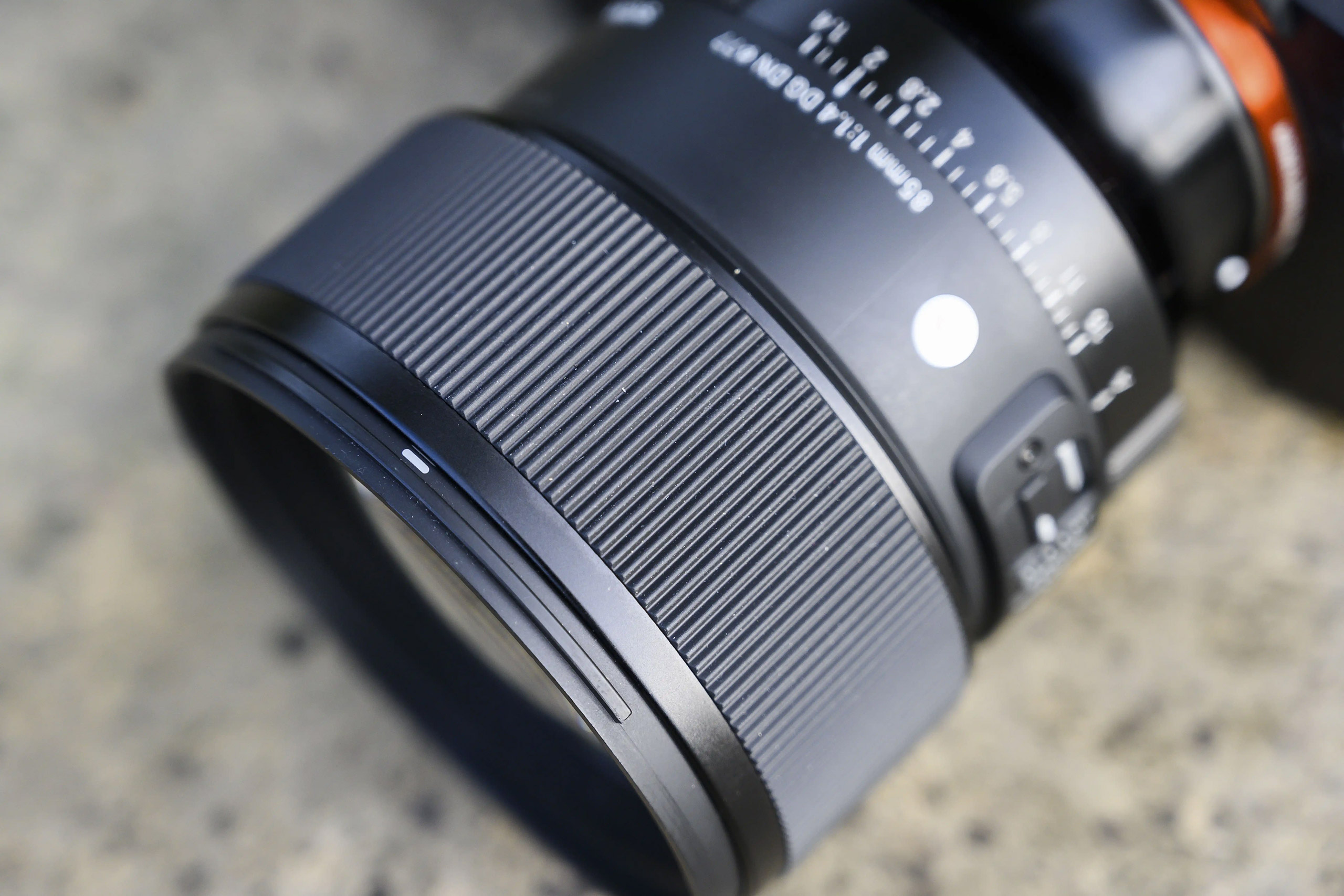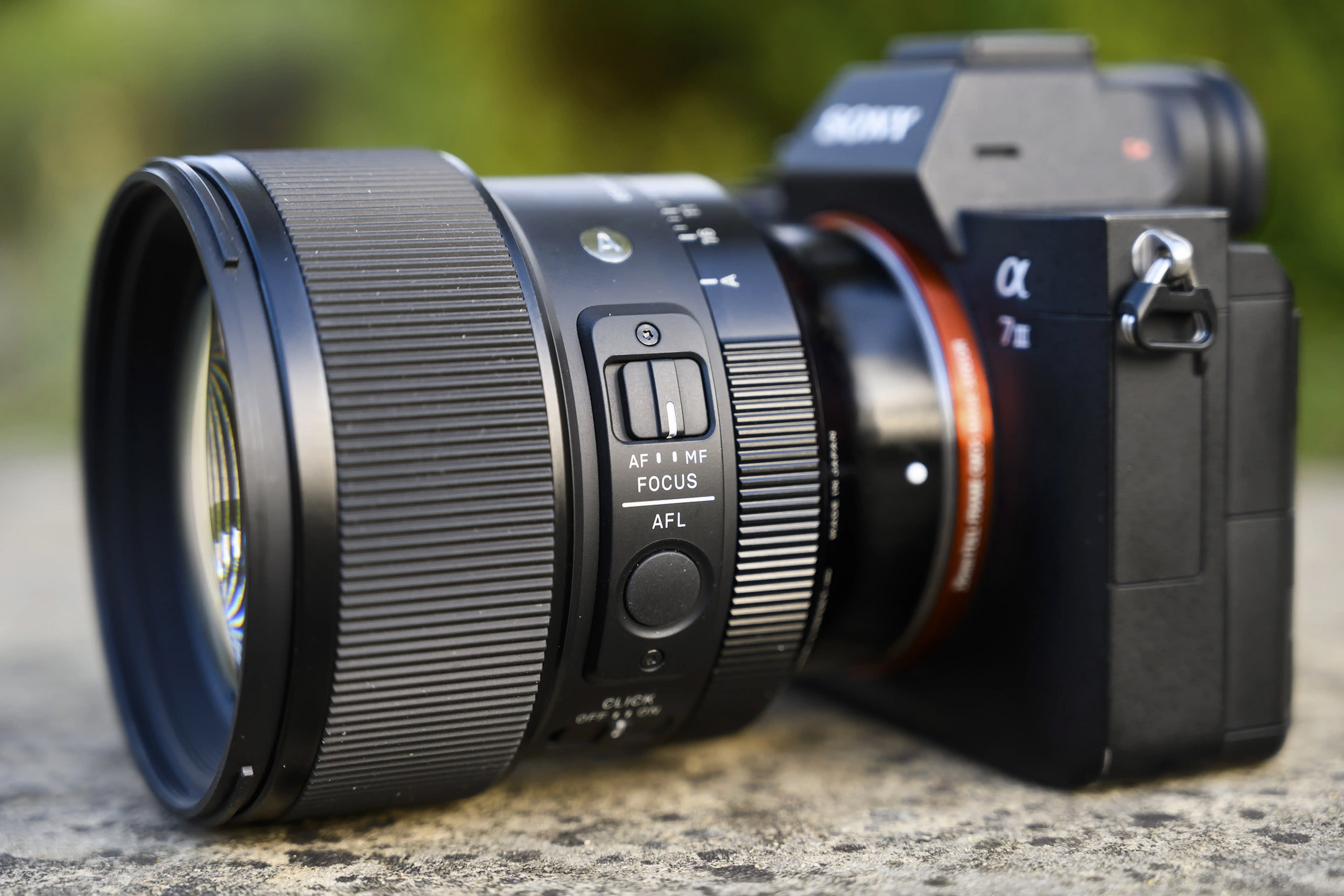Amateur Photographer verdict
One of the best if not the best lens for portrait photography that guarantees excellent image quality. It also doubles for video use as it has the option to de-click the aperture ring- Smaller and lighter than the Sigma 85mm F1.4 DG HSM Art
- Excellent features and performance for the price
- Autofocus works effectively with face/eye/animal detection modes
- Remarkable performance wide-open at f/1.4
- Lens based aperture control with de-click switch
- Dust and splash proof construction
- Accepts 77mm filters and adapters
- Lens hood features a lock button
- Exhibits pincushion distortion
- No focus distance marks on the barrel
- The AFL button has a subtle click when pressed
Users of Sony’s A7-series of full-frame mirrorless cameras are well catered for when it comes to fast 85mm prime lenses, but where does the Sigma 85mm F1.4 DG DN Art fit in? A bright 85mm f/1.4 lens is a great choice for portraits, or for when you need to record video in low-light. Does this lens do enough to make it a great lens for video?
There are several alternative 85mm lenses to consider. At the premium end there are three stellar examples:
Sigma 85mm F1.4 DG HSM Art ($1,199 / £929)
Zeiss Batis 85mm F1.8 ($929 / £1,129)
Sony FE 85mm F1.4 G Master ($1,698 / £1,349).
At the more affordable end of the spectrum there’s the manual-focus Samyang MF 85mm F1.4 MK2 ($320 / £359), the Sony FE 85mm f/1.8 ($548 / £499) and the Samyang AF 85mm F1.4 FE ($599 / £529).
Not exactly a shortage to choose from, so how does Sigma’s latest 85mm prime differ and where does it fit in?
Whereas the Sigma 85mm f1.4 DG HSM Art was originally designed for full-frame DSLRs and later adapted for use with mirrorless cameras that use the E-mount and L-mount, the Sigma 85mm F1.4 DG DN Art is developed for full-frame mirrorless cameras from the ground up – denoted by the ‘DN’ initials in its name.

Like other Sigma DG DN full-frame mirrorless lenses, of which we’re starting to see a growing number appear, the 85mm F1.4 DG DN stands out in a number of ways from previous Sigma examples and its rivals, which we’ll come to shortly.
We’re not looking at a fast prime that’s only made in Sony E-mount either; it’s also available in L-mount for use with Leica, Sigma and Panasonic full-frame cameras. Is it one of the best portrait lenses you can buy? Let’s take a look.
Sigma 85mm F1.4 DG DN Art: Features
Compared to the Sigma 85mm f1.4 DG HSM Art, which is one of the largest and heaviest 85mm lenses we’ve tested, Sigma’s latest example is far more compact and discards a vast amount of weight. To be precise, the E-mount version that we were sent for review works out 30mm shorter in length and 500g lighter than Sigma’s previous version. This is a phenomenal weight saving for a lens that promises improved image quality.
Where the Sigma 85mm F1.4 DG HSM Art was made up of 14 elements in 12 groups, this lens features an entirely new optical design encompassing 15 elements in 11 groups. Within this construction are five special low-dispersion (SLD) glass elements, one aspherical element at the rear of the lens group and four high refractive index glass elements to minimise chromatic aberration, flare and ghosting.
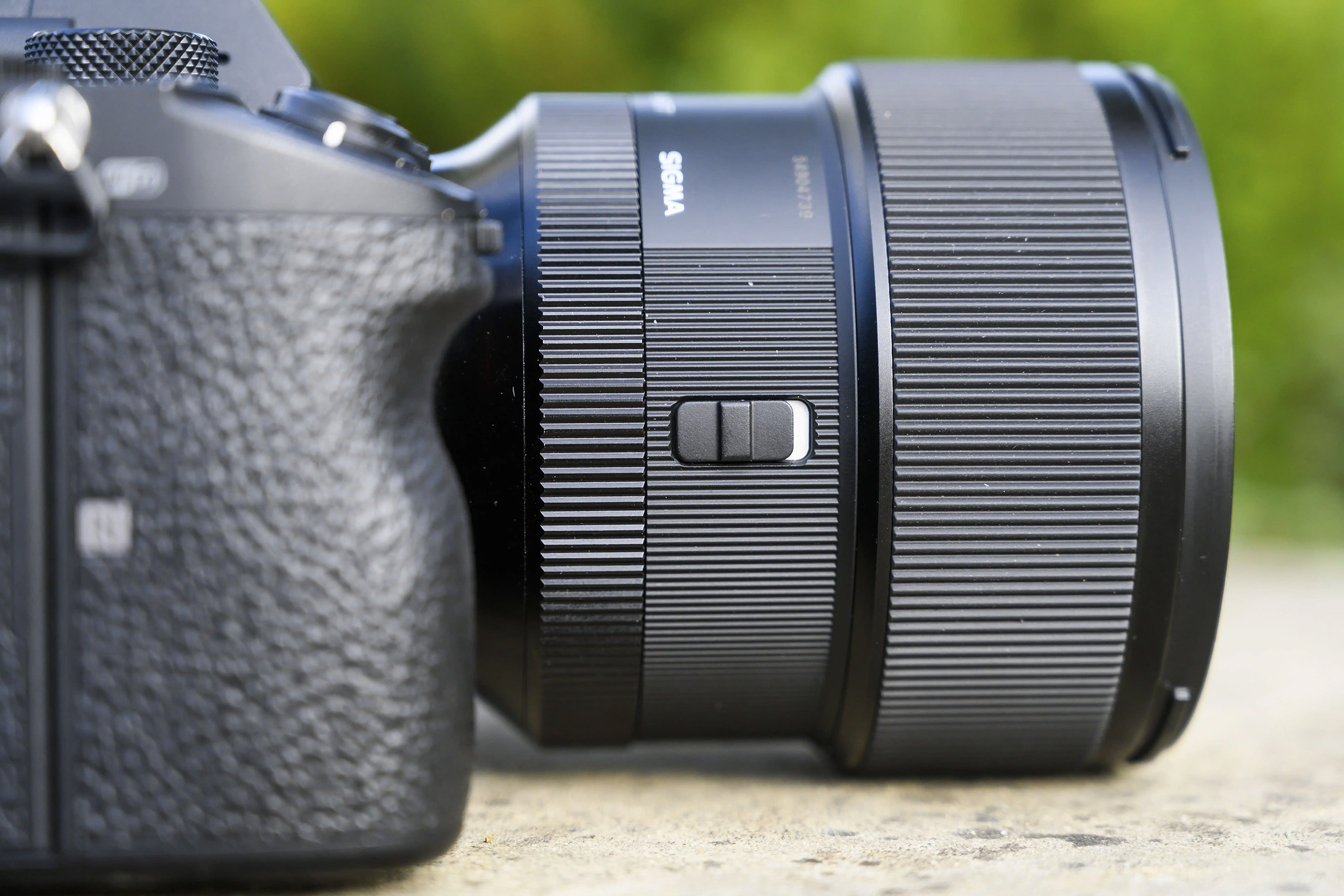
By making the most of in-camera aberration correction, Sigma has been able to restrict this to those that are eliminated by the lens’ optics. This, combined with reducing the size of the focus element, allows it to be made smaller. Furthermore, with an emphasis on the elimination of axial chromatic aberration, Sigma says users can expect sharp images with no colour fringing, even wide-open at f/1.4.
Complimenting the lens construction is a diaphragm with 11 curved blades to give a circular aperture for attractive bokeh. As for autofocus, the stepping motor it uses is intended to keep AF operation fast and silent, which will be important for those using the lens for video. It’s designed to work well with both phase-detection and contrast-detection autofocus, and fully supports different manufacturers face/eye/animal detection modes.
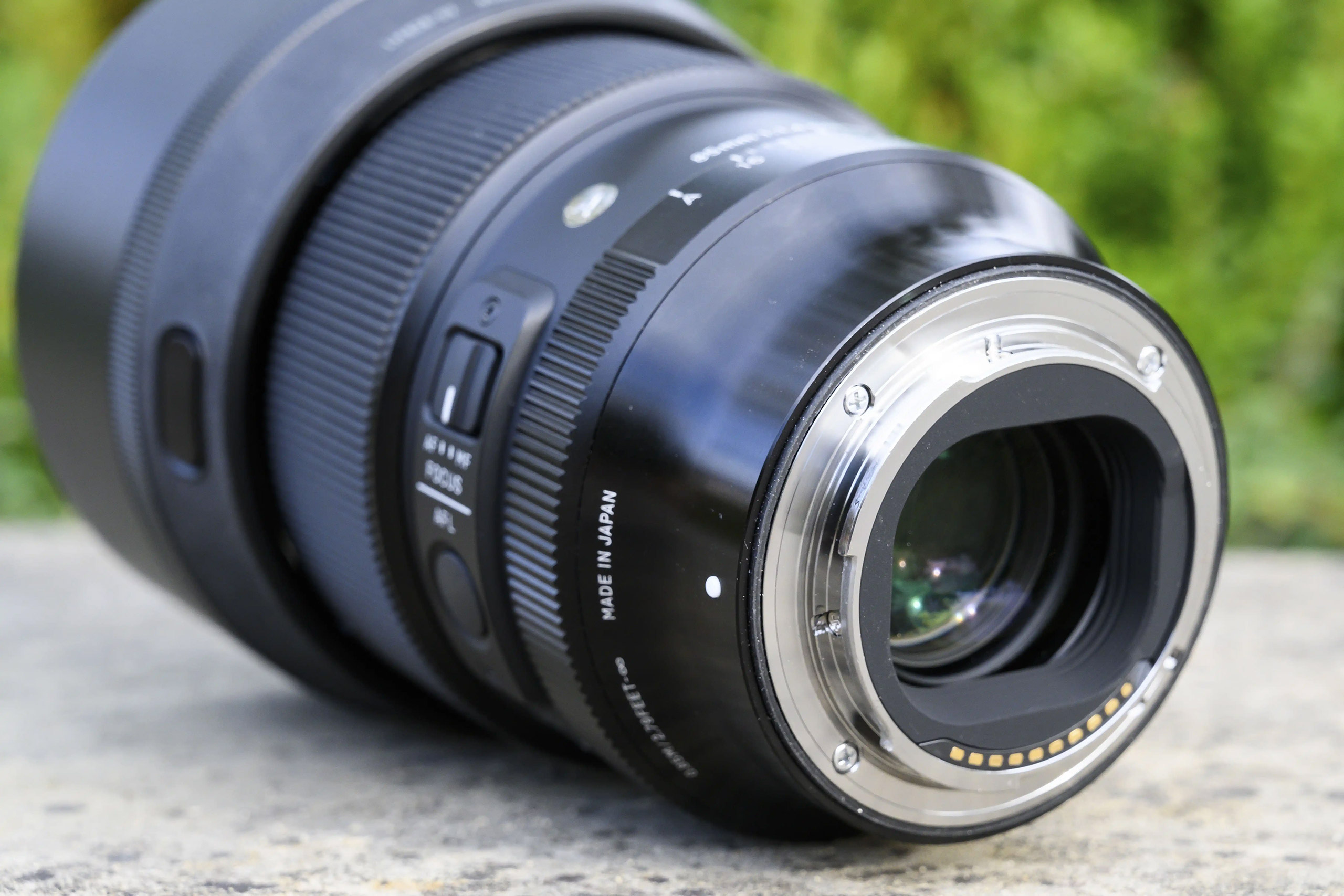
Elsewhere, the lens features a durable, brass metal mount and is compatible with Sigma’s USB dock UD-11 that’s sold separately for L-mount only. It has a minimum focus distance of 85cm and you’re presented with all the accessories you expect in the box, including a bowl-shaped lens hood, a padded case and front and back caps.
Sigma 85mm F1.4 DG DN Art: Build and Handling
This lens has entirely different handling characteristics to the 85mm F1.4 DG HSM Art. Its predecessor added over a kilogram to the weight of the camera, often rendering setups very front heavy. This is no longer the case.
It balances superbly on full-frame mirrorless cameras like the Sony A7 III I paired it with. I was able to shoot single-handed with no discomfort. Having the option to shoot without always supporting the lens beneath the barrel will appeal to portrait and wedding photographers who often find themselves offering direction with their other hand. Better than this is that it lets you walk around and shoot without feeling weighed down.
Build quality meets the high standards we’ve come to expect of Sigma’s Art lenses. The construction of the barrel is a blend of precision-engineered metal and thermally stable composite (TSC), with its rubberised focus ring offering excellent precision and fluidity when focusing manually.
The transition between choosing whether the aperture ring clicks or doesn’t click from the flick of a switch is seamless. You can choose to receive feedback of the aperture changing every 1/3EV stop by leaving the click switch set to on, or if you’d prefer to adjust the aperture ring smoothly and silently, such as when recording video, it can be switched to off (for clickless operation).
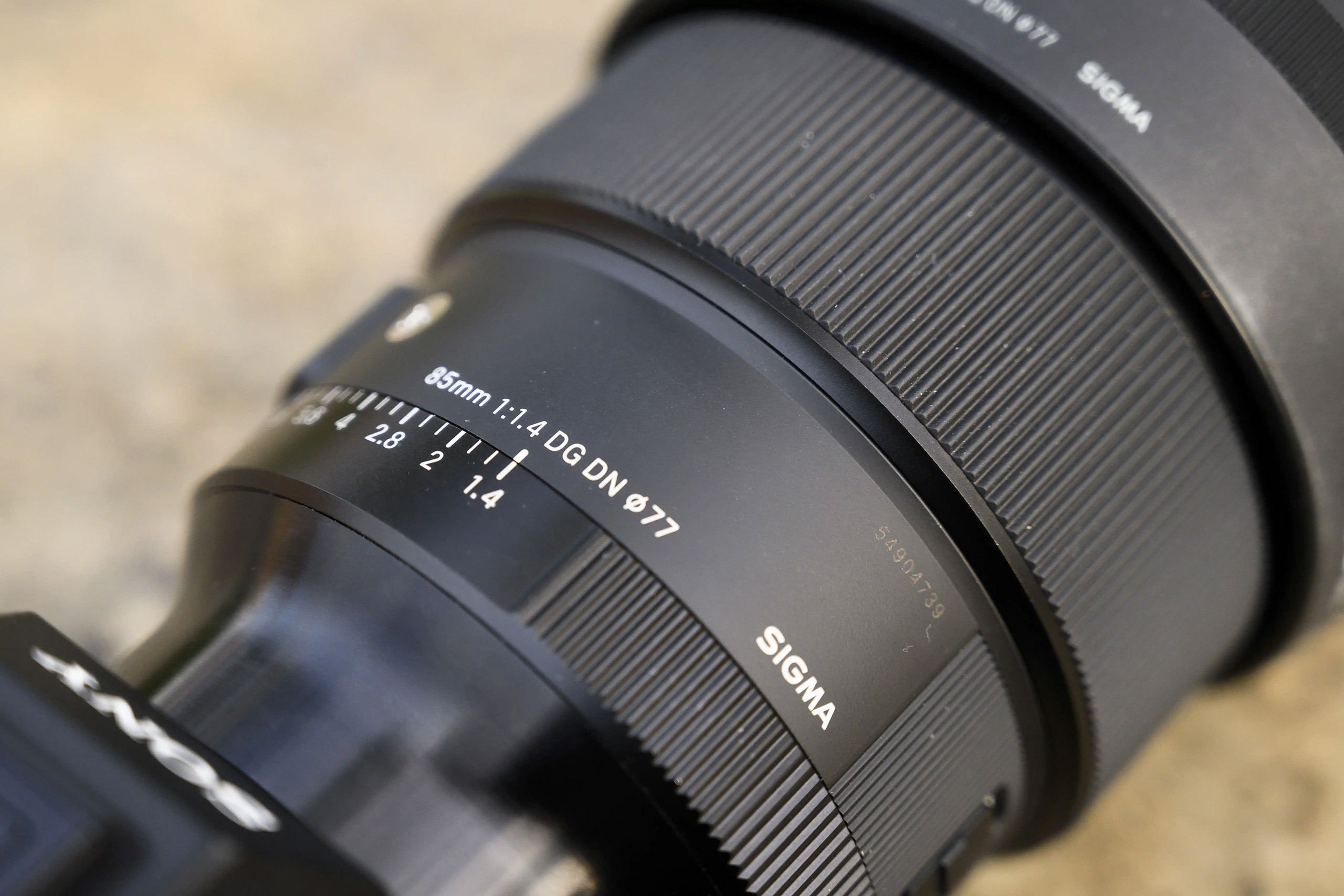
To prevent accidentally engaging the auto (A) aperture setting, which allows you to adjust the aperture from the camera rather than the lens, Sigma has added an aperture lock switch. It can also be engaged when auto (A) is selected too, preventing the aperture being accidentally changed by knocking the aperture ring.

Having good weather resistance is crucial on a lens that’s likely to see plenty of use outdoors as well as in. The dust-and splash-proof structure features seals at strategic points in its construction, including a rubber seal around the perimeter of the metal mount that compresses against the mount on the camera. The autofocus lock (AFL) button is also weather sealed and exhibits a subtle click when pressed.
Sigma 85mm F1.4 DG DN Art: Autofocus
As we’ve witnessed on other Sigma DG DN lenses, users get a focus lock (AFL) button just below the AF/MF switch that can be setup from compatible camera’s menus to perform various different functions. Manual focusing is fly-by-wire rather than being mechanically coupled, but as already mentioned, users get precise focusing adjustment when the focus ring is rotated slowly.
The autofocus performance is good, with signs of mild hunting only being observed when it was asked to focus from near to far and vice versa in challenging low-light scenes. In brighter conditions the lens locked onto subject’s eyes with little fuss, aided by the effective real-time Eye-AF on the Sony A7 III.
I managed to achieve a consistently high number of sharp shots wide-open at f/1.4 during testing and the faint whirring it makes as it focuses didn’t disturb audio in outdoor movie recordings, though it was picked by the camera’s internal microphone up in a silent room.
Sigma 85mm F1.4 DG DN Art: Performance
To gauge how the lens performs optically, I requested that it be supplied with the older Sigma 85mm f1.4 DG HSM Art in E-mount so I could compare identical shots taken across the aperture range before meticulously examining real-world samples.

Comparing images revealed it’s ever so slightly sharper than its predecessor in the centre at f/1.4. Sharpness at the edge of the frame is remarkably impressive wide-open, though you can expect corners to get even sharper when it’s stopped down.

Studying shots taken between f/1.4 to f/16 tells us the sweet spot of edge-to-edge sharpness is located between f/4-5.6, with a high level of sharpness also being recorded at f/8. The introduction of diffraction takes the edge off sharpness a little when it’s used beyond f/11 and at its minimum of f/16.

The built-in lens profile that’s applied to Raw files automatically does a fine job of correcting chromatic aberration to the point I didn’t witness any sign of nasty colour fringing, not even along any high-contrast edges of shots taken at the maximum aperture.
Users will want to ensure their in-camera lens compensation is turned on, though vignetting does remain prominent when the lens is used at wider apertures. Corner shading is tasteful rather than garish and diminishes as it’s stopped down to f/2.8, barely traceable by f/4.


Interestingly my comparisons revealed the lens displays greater pincushion distortion than Sigma’s 85mm f1.4 DG HSM Art so some users may want to apply a small amount of manual distortion correction in post.
Sigma 85mm F1.4 DG DN Art: Verdict
I’ve tested some phenomenally impressive prime lenses over the last couple of years, but the Sigma 85mm F1.4 DG DN Art stands out as one, if not the best, I’ve used.
Though the optical quality of its predecessor remains excellent to this day, its bulk and colossal weight isn’t complimentary to full-frame mirrorless cameras, which is where other manufacturers examples have presented an advantage up until now.
By designing the lens from scratch and tailoring it for mirrorless users who desire smaller, lighter lenses, Sigma has created an absolute gem of lens that delivers astonishingly impressive image quality, fantastic lens-based aperture control and complimentary handling all in one.
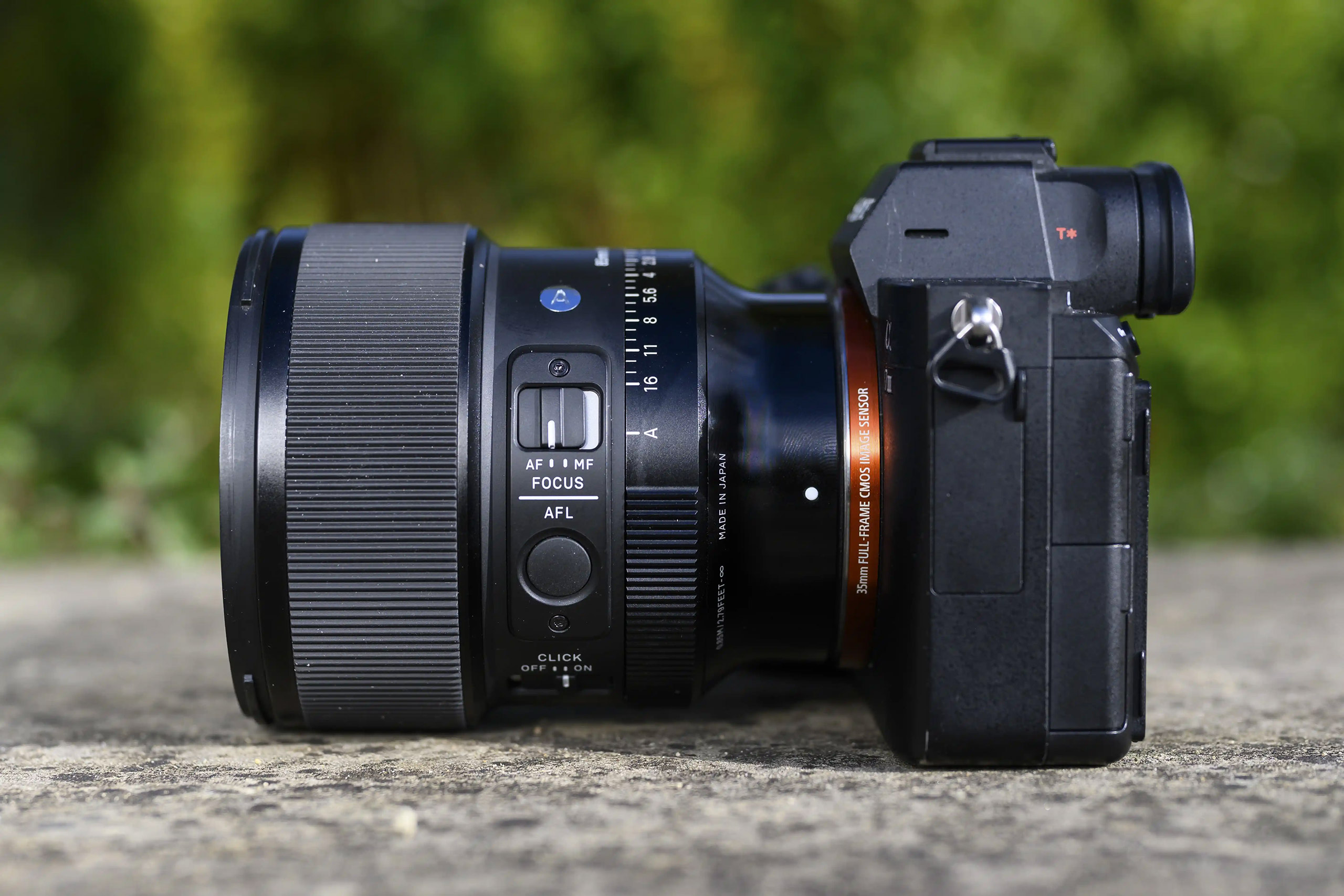
Better still, it offers all the desirable features you’ll find on its more expensive Sony FE 85mm F1.4 GM rival for £500 less. Take all that it offers for the money into consideration and there’s no disputing that it’s currently the best value for money premium 85mm f/1.4 lens you can buy under £1000.
It’s a must-have for E-mount or L-mount users who love to shoot portraiture, weddings or take a documentary style approach to their work, and for video use it has all the right features, including the option to de-click the aperture ring.
All that’s left to say is that it sets a new gold standard in portrait lenses for mirrorless cameras and I’m hopeful it won’t be too long before we see Sigma release versions in Canon RF and Nikon Z-mount.

Find more E-mount lenses in our guide to the best Sony E-Mount lenses.

